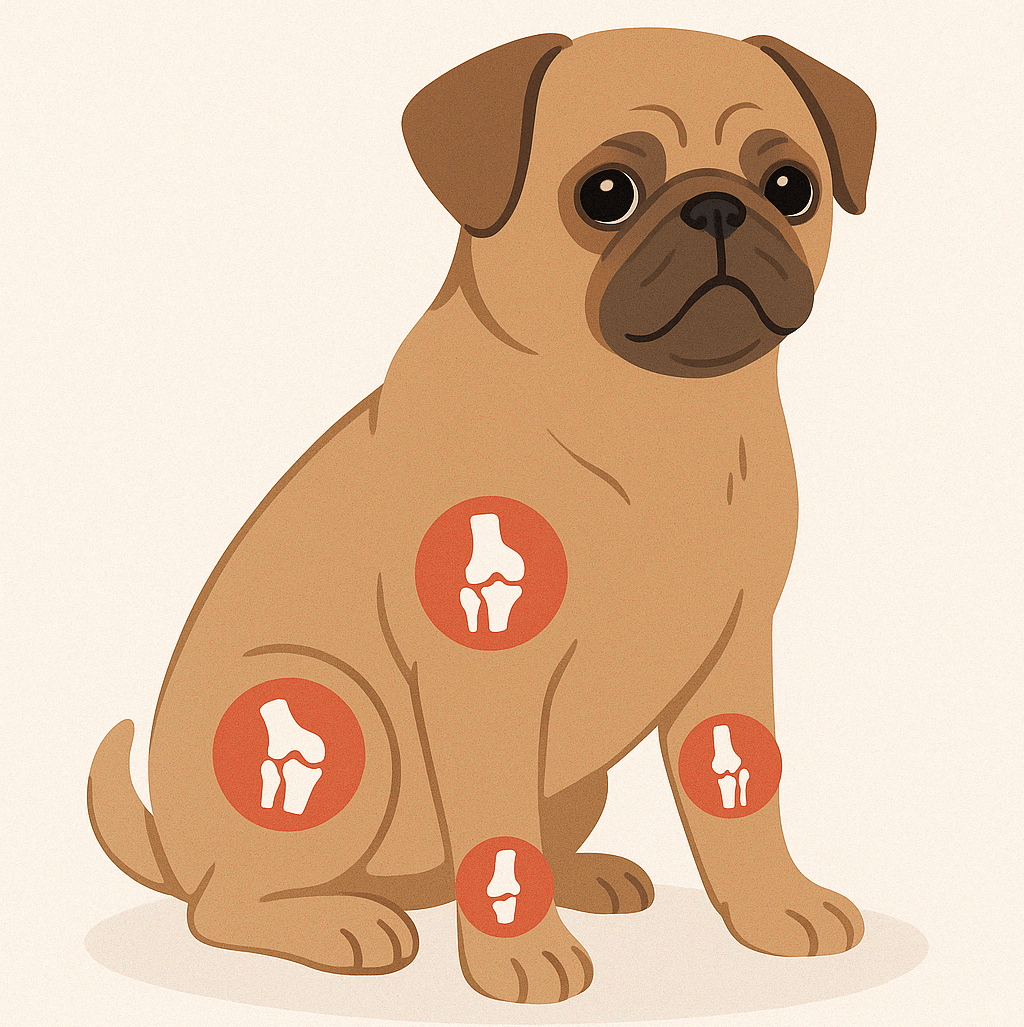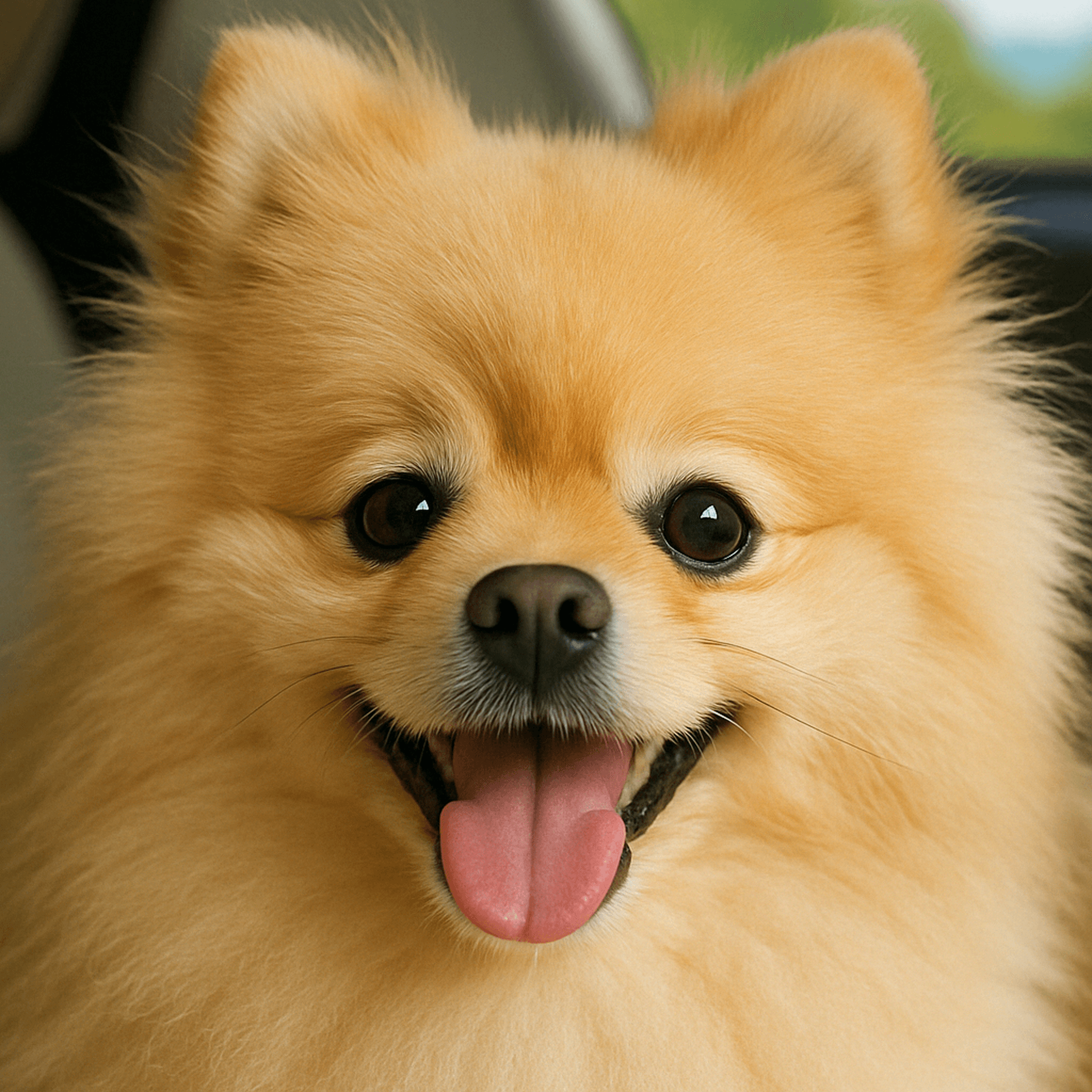
Dysplasia and Joint Diseases in Small Dog Breeds – Diagnosis, Prevention, Treatment
Joint dysplasia and other musculoskeletal disorders don't just affect large and giant dog breeds. These conditions are also increasingly common in miniature and small breeds. Owners of dogs like Pugs, Yorkshire Terriers, and French Bulldogs should be especially vigilant, as joint problems can significantly impair their quality of life and even lead to permanent disability.
In this article, we discuss the most common joint diseases in small breed dogs, such as hip and elbow dysplasia, OCD (osteochondritis dissecans), and other ailments, presenting current methods of diagnosis, treatment, and effective prevention.
The most endangered small dog breeds
Although it's stereotypically assumed that hip dysplasia primarily affects German Shepherds, Labradors, and Rottweilers, it's increasingly being diagnosed in smaller breeds as well. The most vulnerable include:
-
Pug – due to its compact body structure and tendency to be overweight.
-
French and English Bulldog – stocky figure, posture defects, hereditary predispositions.
-
Shih Tzu – often burdened with orthopedic problems from puppyhood.
-
Yorkshire Terrier – prone to patella luxation and joint instability.
-
Chihuahua – the lightest breed, but surprisingly often struggling with hip and knee problems.
-
Pekingese – often suffer from congenital elbow joint defects. Elbow problems in Pekingese can appear as early as puppyhood – it's important to know the symptoms of hip dysplasia in Pekingese to begin treatment quickly.
Dysplasia and other joint diseases in small dogs
1. Hip Dysplasia (HD)
This is a developmental defect that causes the femoral head to misalign with the hip socket. In small dogs, symptoms can be subtle – reluctance to move, morning stiffness, or limping after exercise.
2. Elbow Dysplasia (ED)
Less commonly diagnosed in small breeds, but not impossible. It particularly affects pugs and bulldogs. Symptoms include lameness of the forelimbs, stiffness, and pain when bending the elbow, especially during movement.
3. Osteochondritis dissecans (OCD)
OCD is caused by insufficient blood supply to joint cartilage, which leads to its necrosis and separation of fragments. Although more common in large dogs, it also occurs in smaller dogs, especially rapidly growing toy breed puppies.
OCD in a French bulldog may manifest itself as a reluctance to play, lameness after a walk, or stiffness when standing up.
4. Patellar dislocation (Luxatio patellae)
One of the most common orthopedic conditions in small dogs, it involves the patella moving out of its anatomical position. It manifests itself as a sudden "jumping" on one paw or temporary lameness.
This is a typical lameness seen in Yorkshire Terriers – how can you recognize patellar luxation in a Yorkie? Symptoms can appear suddenly and then disappear, making diagnosis difficult.
5. Legg-Calvé-Perthes (Necrosis of the femoral head)
A disease that primarily affects dogs under 12 months of age, such as Yorkshire Terriers, Chihuahuas, and Miniature Pinschers, it causes necrosis of the femoral head, leading to pain and lameness.
How to recognize joint diseases in small dogs?
Early diagnosis is key. If you notice symptoms in your dog such as:
-
reluctance to climb stairs,
-
morning stiffness,
-
lameness (even temporary),
-
difficulty standing up or sitting down,
-
unusual position of the hind legs while walking, it is worth visiting a veterinary orthopedist as soon as possible.
The following methods are available:
-
clinical examination and palpation,
-
X-ray of joints,
-
Ultrasound of joints and muscles,
-
computed tomography or magnetic resonance imaging (in complicated cases).

How to prevent joint disease in pugs and other small breeds?
In small breeds, prevention plays a key role:
-
Proper diet – especially during growth. Food rich in glucosamine, chondroitin, and omega-3 fatty acids.
-
Maintaining a healthy body weight – being overweight is one of the main causes of joint overload.
-
Avoiding intense physical activity in puppies – jumping, running up and down stairs or taking too long walks can damage immature joints.
-
Supplementation – glucosamine, MSM, collagen type II, hyaluronic acid – after consultation with a veterinarian.
-
Regular orthopedic check-ups – especially in breeds with genetic predispositions.
Treatment of joint diseases in small dogs
Treatment depends on the stage of the disease:
-
Pharmacotherapy – anti-inflammatory drugs, painkillers, preparations regenerating joint cartilage.
-
Rehabilitation – hydrotherapy, physiotherapy, laser therapy, massages (available in specialized veterinary clinics or rehabilitation centers).
-
Surgical procedures – in more severe cases (e.g. grade III-IV patella luxation, advanced hip dysplasia).
Patella luxation surgery for Chihuahuas – when should you consider it? When lameness becomes chronic and rehabilitation is ineffective, surgical intervention can restore the dog to full mobility. -
Lifestyle changes – limiting jumping, adapting the environment (ramps, anti-slip mats), special orthopedic beds.
Summary
Small dog breeds, despite their delicate build, can suffer from serious joint disorders. Early detection and appropriate treatment can ensure your pet lives a comfortable, pain-free life. Prevention, awareness of breed predispositions, and ongoing cooperation with a veterinarian are key.




 https://petto.com.pl
https://petto.com.pl